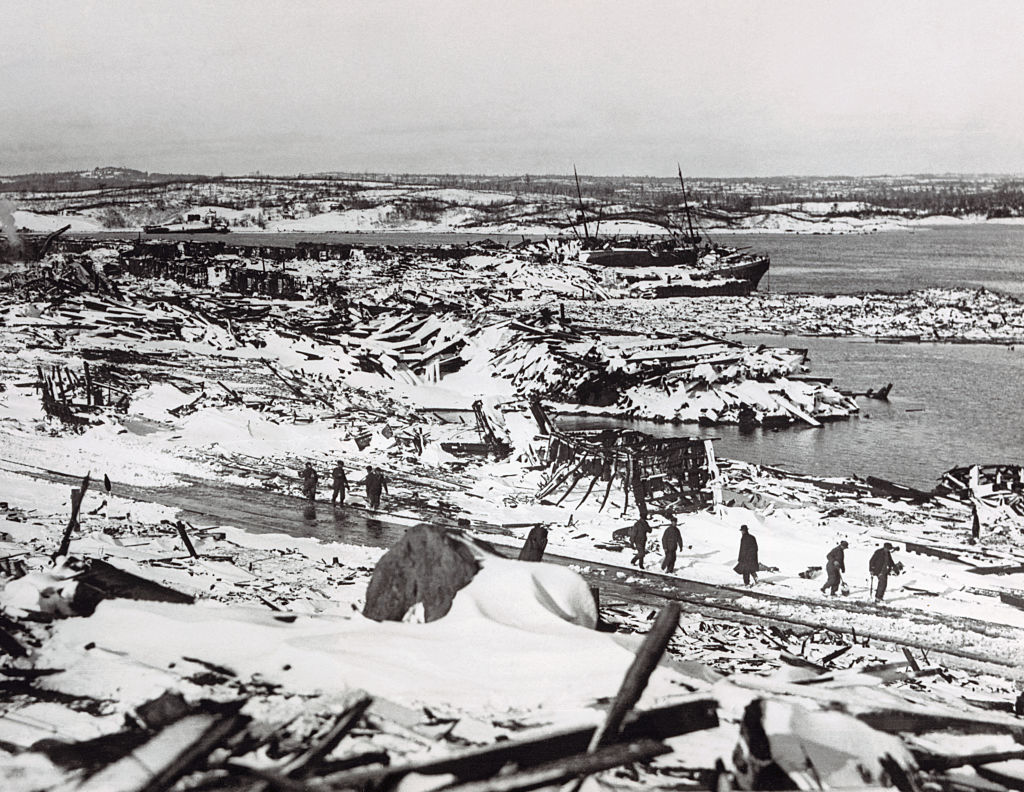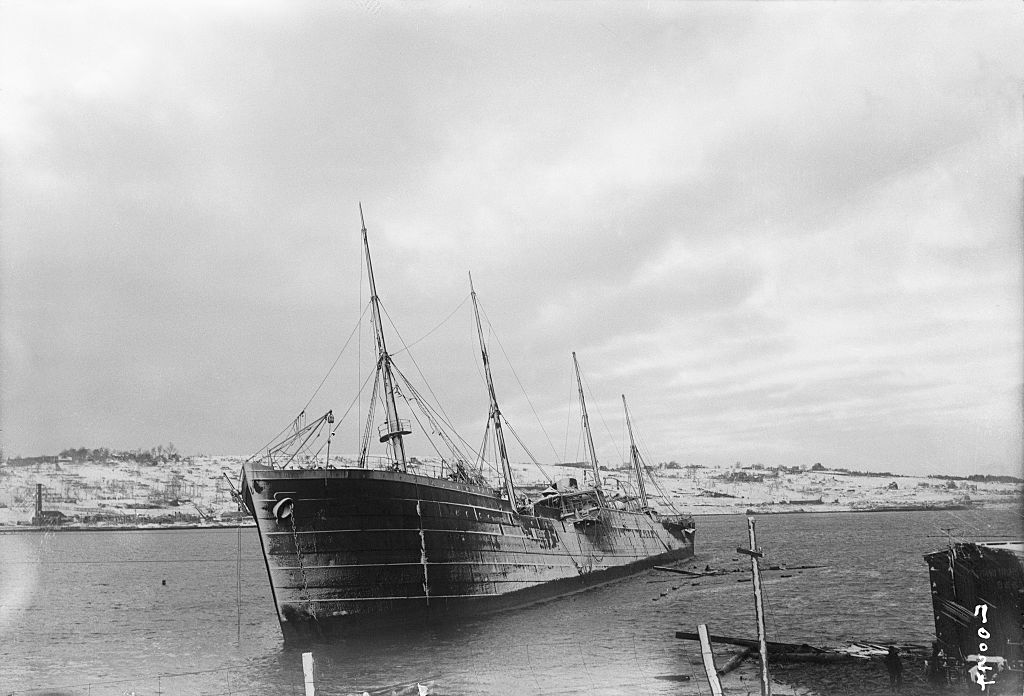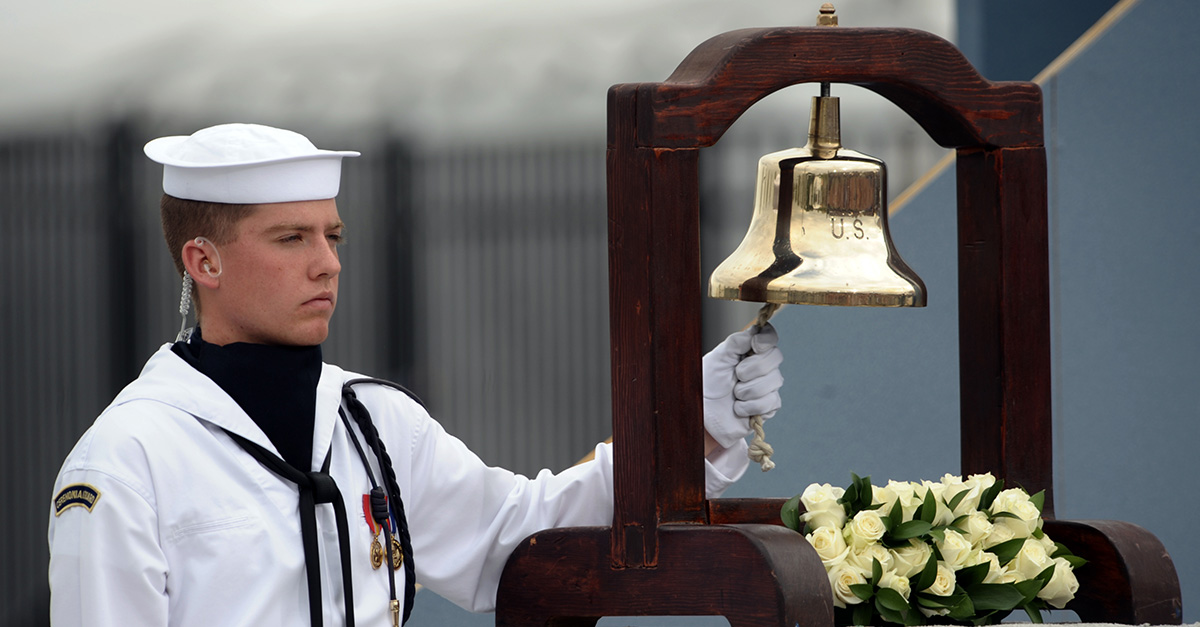A Catastrophe That Shook The World
The Halifax Explosion stands as one of the most devastating human-made disasters of the early 20th century. What began as a routine morning in a bustling harbor quickly turned into a nightmare when a tragic collision set off an unprecedented blast. The sheer force of the explosion leveled entire neighborhoods, forever altering the city and its people.
A Devastating Morning In Halifax
On the morning of December 6, 1917, a catastrophic event unfolded in Halifax, Nova Scotia. A collision between two ships in the harbor triggered a chain reaction, culminating in one of the most aggressive explosions in history.
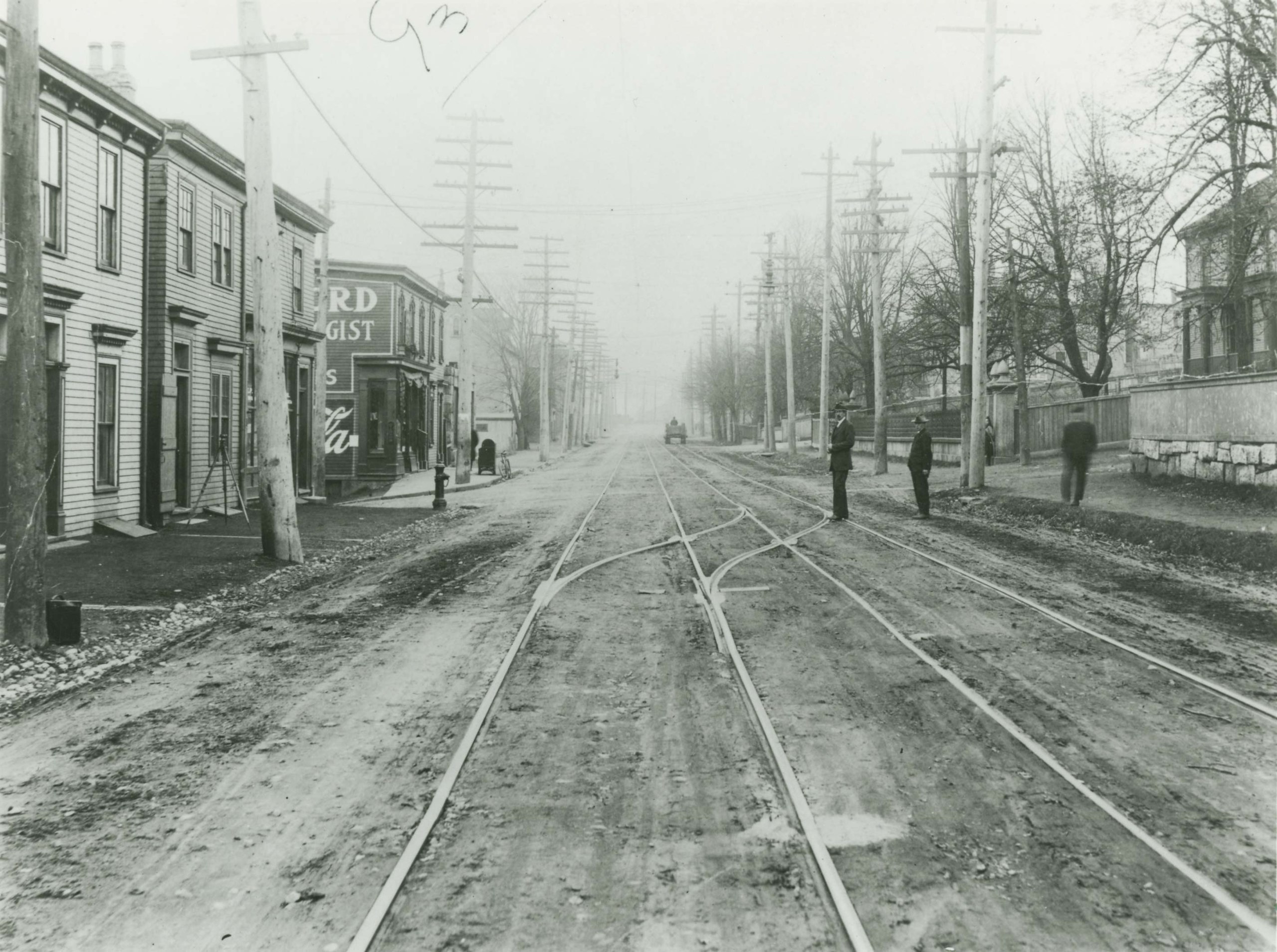 Unknown Author, Wikimedia Commons
Unknown Author, Wikimedia Commons
The Largest Human Made Explosion Of Its Time
Before the development of nuclear arms, the Halifax Explosion held the record for the largest human-made explosion ever recorded. The force of the blast, estimated at 2.9 kilotons of TNT, was comparable to the smallest atomic missiles.
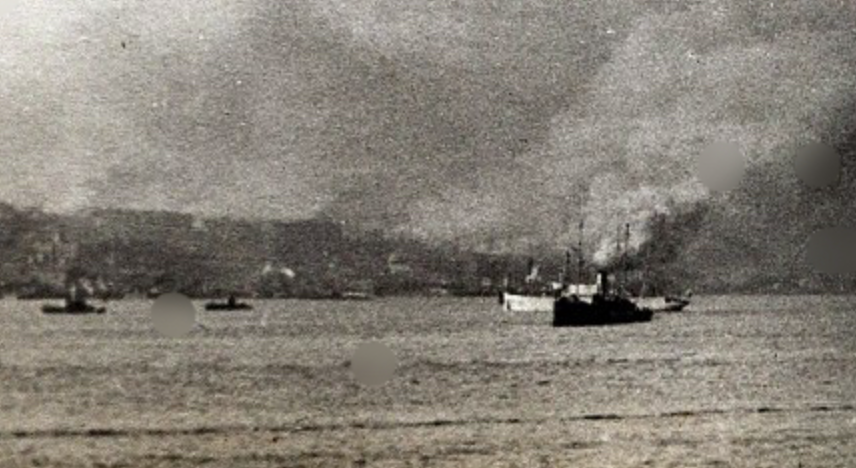 Ross Dunn, CC BY-SA 2.0, Wikimedia Commons
Ross Dunn, CC BY-SA 2.0, Wikimedia Commons
A Strategic Port During A Historic Struggle
During the early 1900’s, Halifax played a crucial role as a major armed forces and shipping hub for the Allied forces. The harbor was essential for transporting troops and supplies across the Atlantic.
 Unknown Author, Wikimedia Commons
Unknown Author, Wikimedia Commons
SS Mont-Blanc’s Lethal Cargo
The French cargo ship Mont-Blanc was carrying an incredibly dangerous mix of TNT, picric acid, guncotton, and benzol, all highly flammable and explosive. While these materials were meant for use in the battle effort, they instead turned Halifax into a more dangerous place.
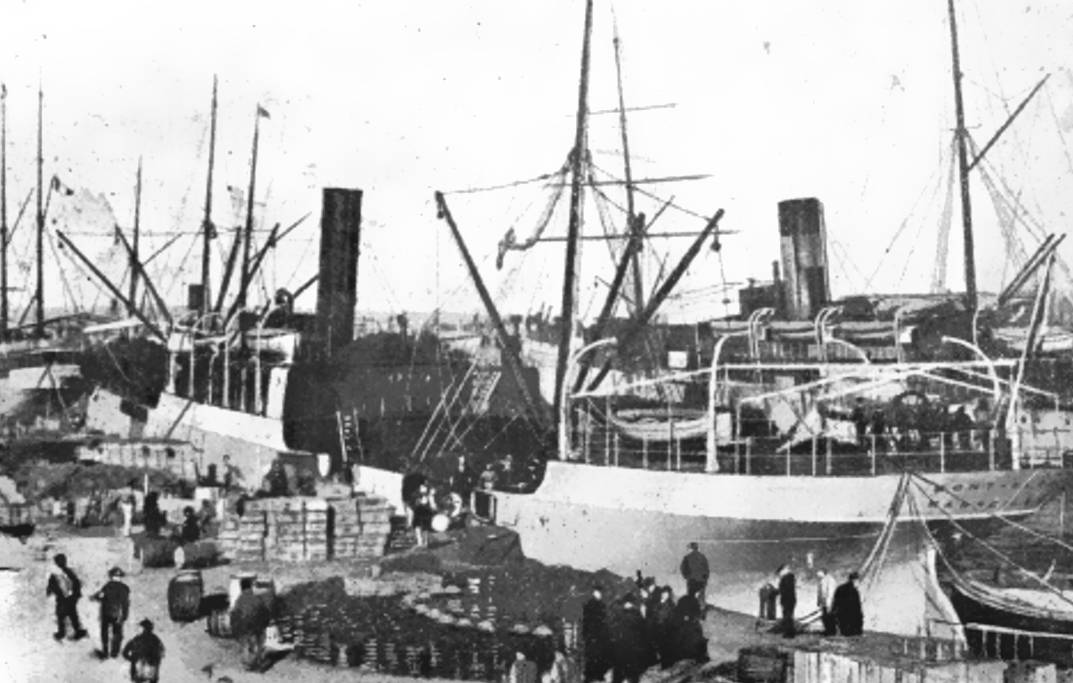 Cuthbertson, Wikimedia Commons
Cuthbertson, Wikimedia Commons
A Ship In A Hurry
The Norwegian ship SS Imo was supposed to pick up relief supplies for devastated Belgium. Delayed in leaving Halifax, it was navigating at excessive speeds in a crowded harbor, leading to disaster.
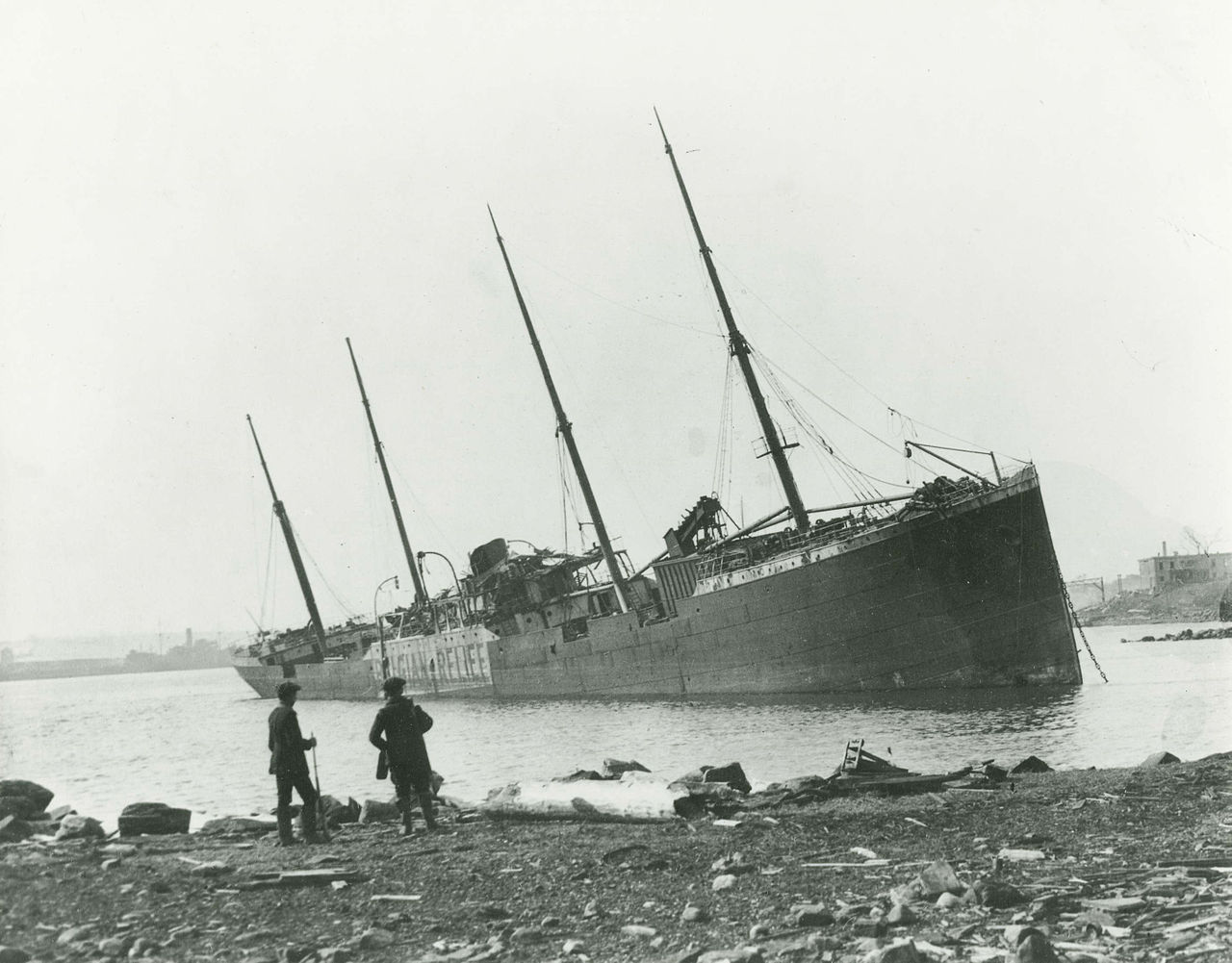 Unknown Author, Wikimedia Commons
Unknown Author, Wikimedia Commons
The Collision That Doomed A City
At approximately 8:45 am, the Mont-Blanc and Imo collided in the narrowest section of the Halifax Harbour. Though the impact was relatively minor, it ruptured barrels of benzol, spilling highly flammable liquid onto Mont-Blanc’s deck.
A Fire That Ignited A Catastrophe
Sparks from the collision ignited the benzol, setting Mont-Blanc ablaze within moments. The ship’s crew abandoned the ship, knowing that the explosive cargo could detonate at any moment.
A City Watches In Horror
As the burning ship drifted closer to the Halifax shoreline, thousands of curious onlookers gathered to witness the fire. Unaware of the imminent disaster, people watched from windows, rooftops, and streets.
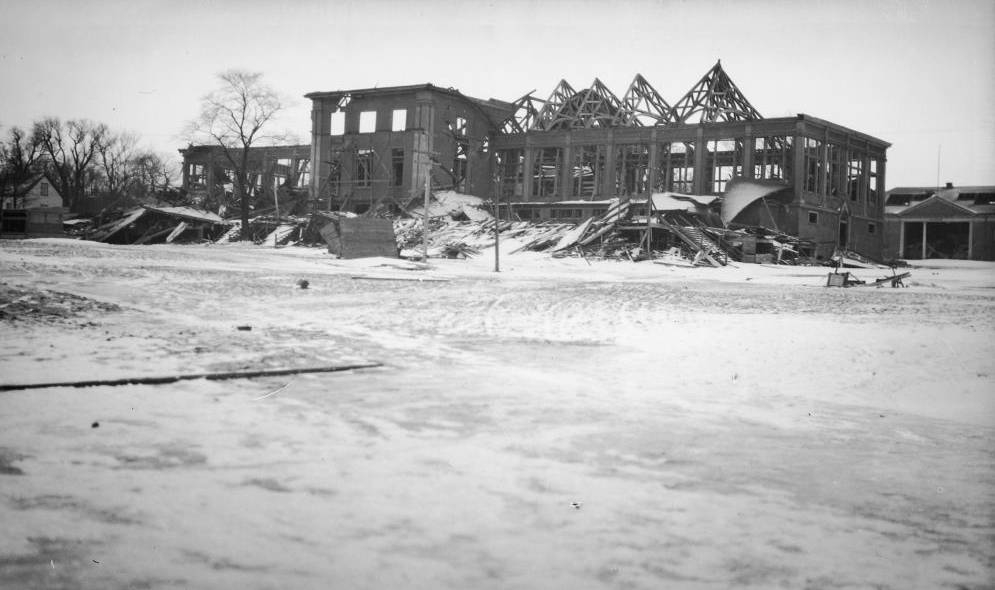 Toronto History, CC BY 2.0, Wikimedia Commons
Toronto History, CC BY 2.0, Wikimedia Commons

History's most fascinating stories and darkest secrets, delivered to your inbox daily.
The Frightening Moment, 9:04 AM
For 20 agonizing minutes, the burning Mont-Blanc floated aimlessly. At exactly 9:04:35 am, the flames reached the munitions cargo, causing a massive explosion that obliterated entire districts.
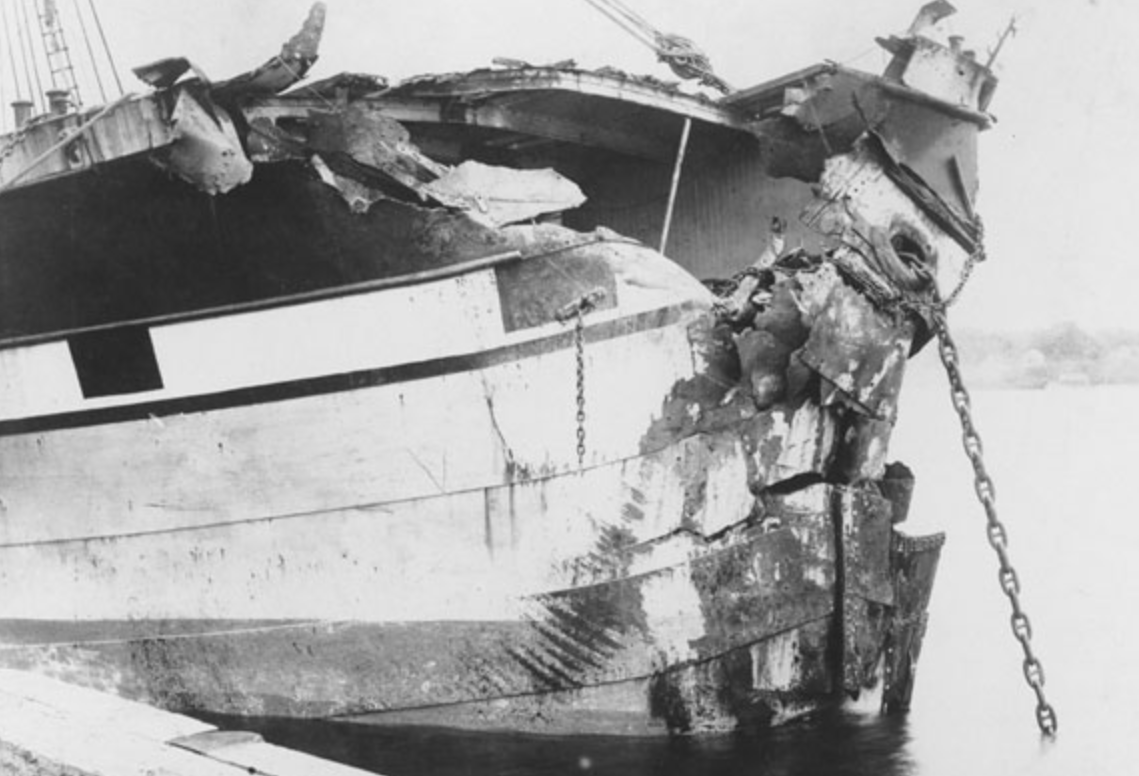 Unknown Author, Wikimedia Commons
Unknown Author, Wikimedia Commons
A Blast Wave Like No Other
The shockwave from the explosion raced through Halifax at 1,000 meters per second, flattening buildings and shattering windows up to 50 miles (80 kilometers) away. Many people were blinded or perished instantly by flying debris.
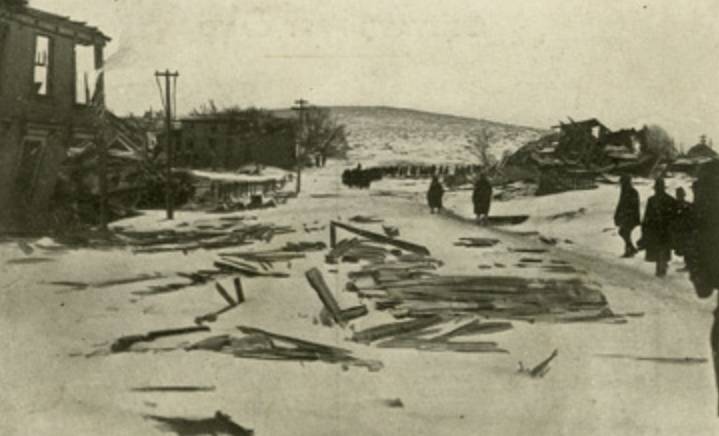 Underwood & Underwood, Wikimedia Commons
Underwood & Underwood, Wikimedia Commons
A Tsunami Wipes Out A Community
The force of the blast displaced massive amounts of water, triggering a 50-foot-high tsunami. The entire Mi’kmaq community of Turtle Grove was swept away, leaving behind almost no survivors.
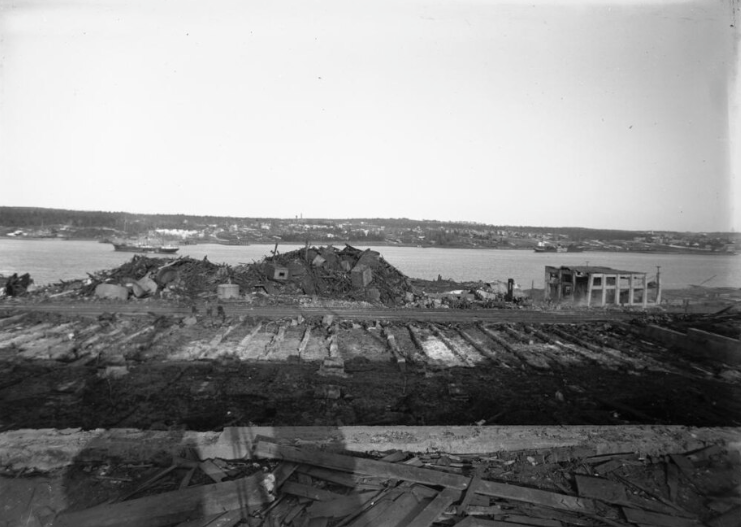 William James, Wikimedia Commons
William James, Wikimedia Commons
Fires Engulf The Ruins
Overturned stoves, broken gas lines, and burning debris ignited fires across Halifax, adding to the devastation. Trapped inside their collapsing homes, many victims perished in the flames.
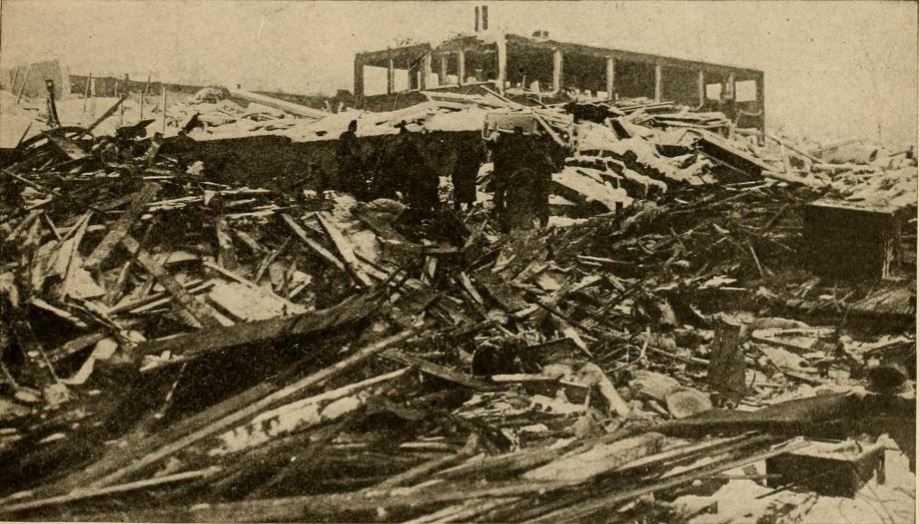 Unknown Author, Wikimedia Commons
Unknown Author, Wikimedia Commons
A City Reduced To Rubble
Entire neighborhoods were flattened, with 12,000 buildings destroyed or severely damaged. The Richmond district, located closest to the blast, was completely wiped off the map.
 Toronto History, CC BY 2.0, Wikimedia Commons
Toronto History, CC BY 2.0, Wikimedia Commons
A Staggering Toll
At least 1,782 people had lost their lives, though many bodies were never recovered. Over 9,000 others were injured, many suffering burns, lost limbs, or permanent blindness.
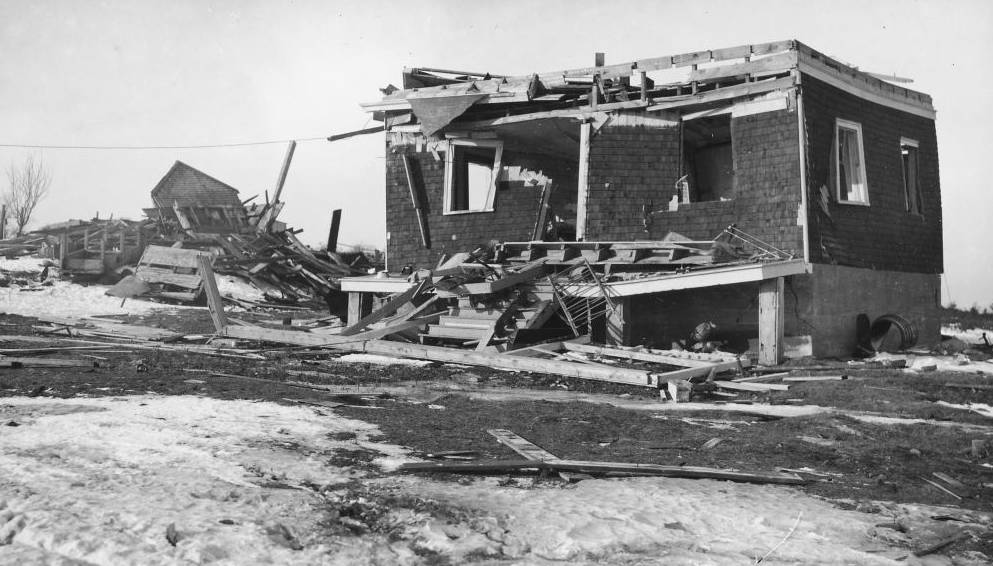 Toronto History, CC BY 2.0, Wikimedia Commons
Toronto History, CC BY 2.0, Wikimedia Commons
A Railway Worker’s Heroic Sacrifice
Telegraph operator Vincent Coleman realized a passenger train was approaching Halifax, unaware of the danger. He stayed behind to send a final warning message, saving hundreds of lives, but perished in the blast.
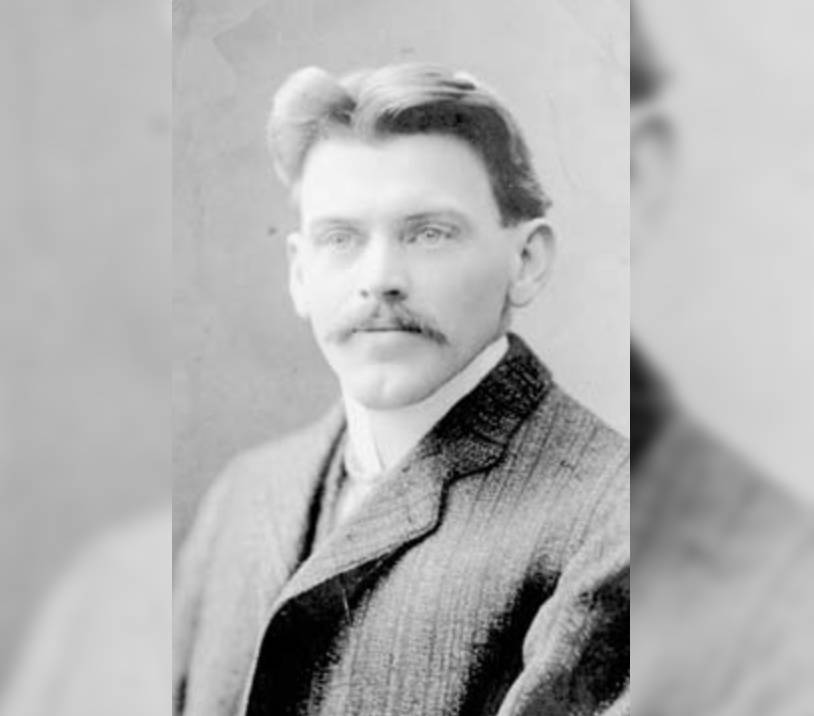 Unknown Author, Wikimedia Commons
Unknown Author, Wikimedia Commons
The SS Imo Was Thrown Ashore
The SS Imo was violently lifted by the explosion and thrown onto the Dartmouth shoreline. The once-seaworthy vessel was stranded on land, heavily damaged.
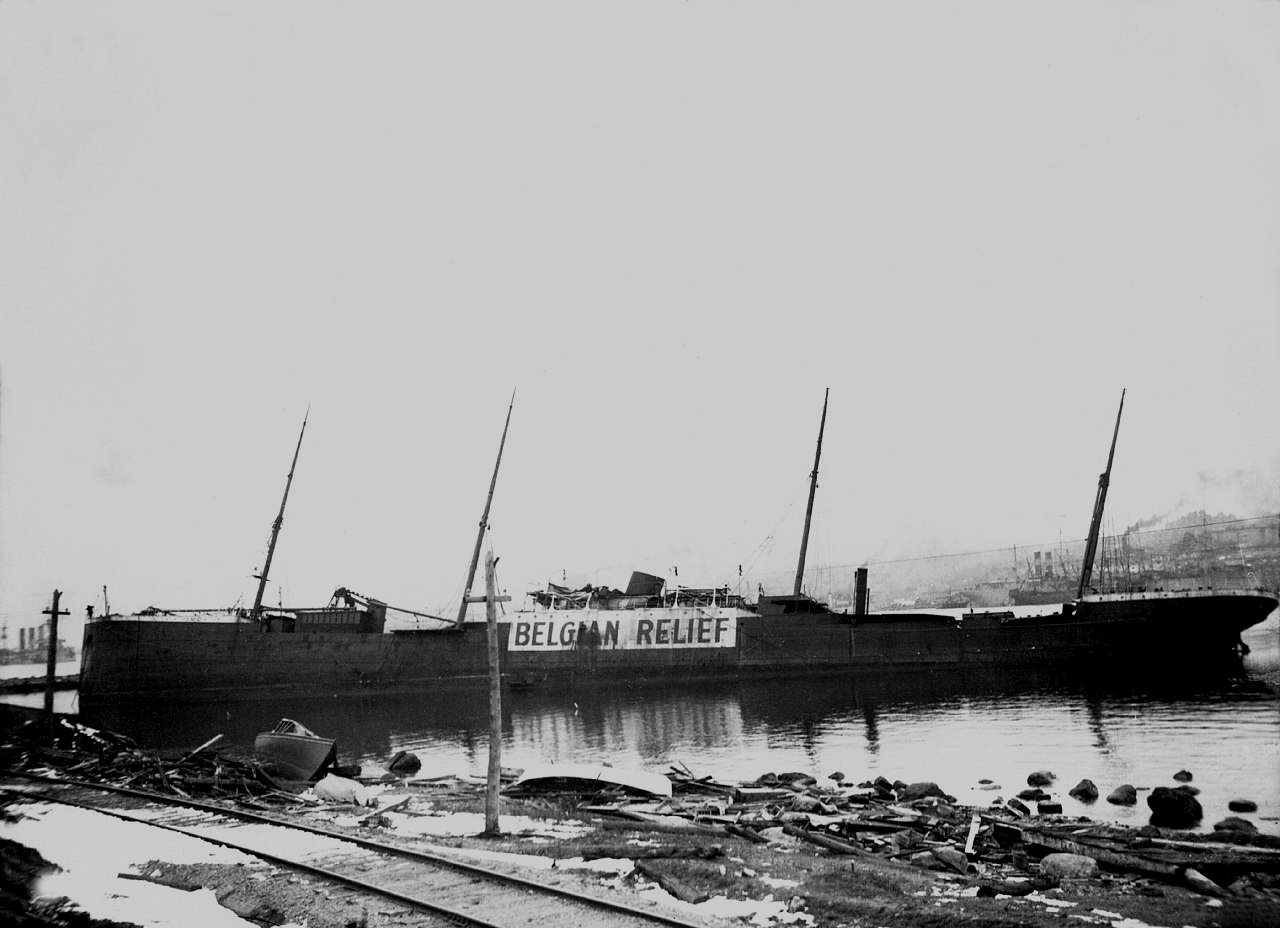 Nova Scotia Archives, Wikimedia Commons
Nova Scotia Archives, Wikimedia Commons
A Sound Heard For Miles
The explosion was heard as far as Cape Breton and Prince Edward Island, over 124 miles (200 kilometers) away. People in Truro, 60 miles (97 kilometers) from Halifax, had their windows shattered by the force of the blast.
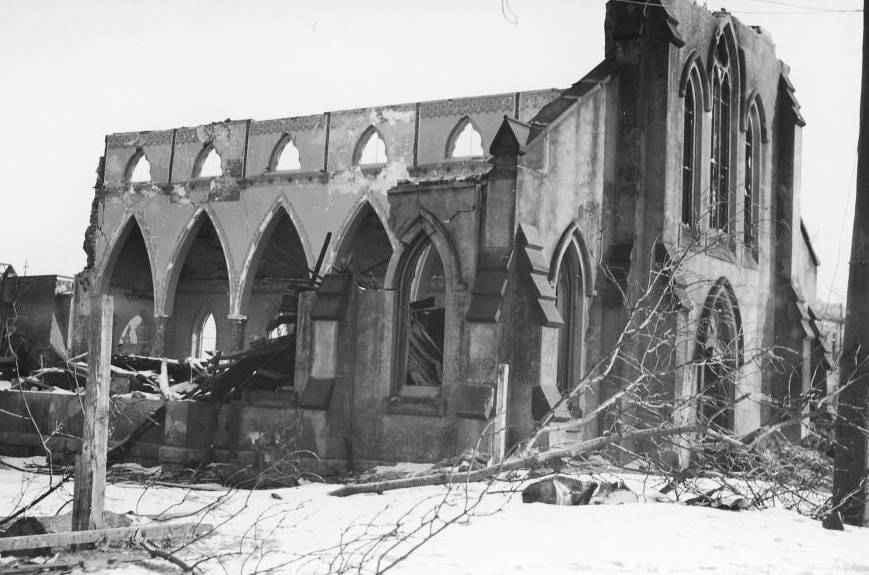 William James, Wikimedia Commons
William James, Wikimedia Commons
Panic And Fear In The Aftermath
With WWI raging, many believed Halifax had been charged by German forces. Armed forces rushed to defend the city, fearing an enemy charge.
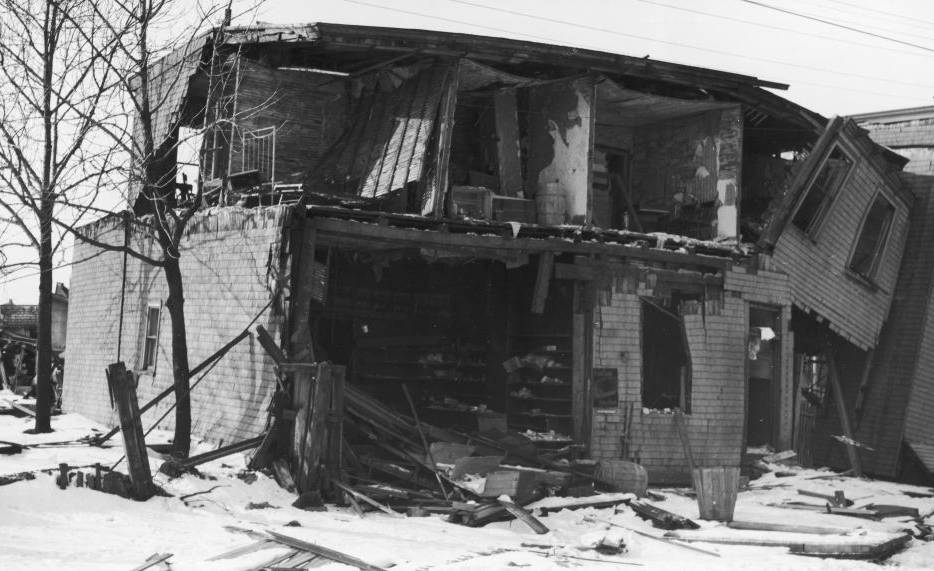 Toronto History, CC BY 2.0, Wikimedia Commons
Toronto History, CC BY 2.0, Wikimedia Commons
Hospitals Overwhelmed By The Wounded
Hospitals were flooded with thousands of casualties, many suffering from burns, deep wounds, and severe eye injuries. Makeshift treatment centers were set up in schools, churches, and armed forces barracks.
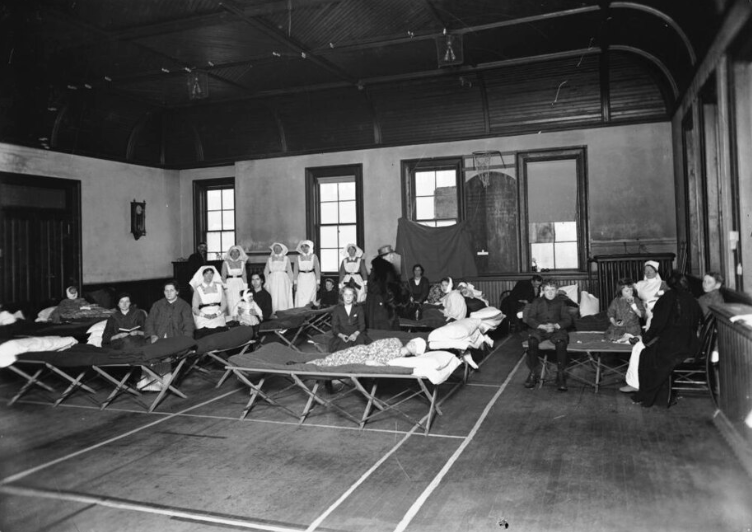 William James, Wikimedia Commons
William James, Wikimedia Commons
Firefighters Perished Trying To Help
Several firefighters had rushed toward the burning Mont-Blanc to try and put out the fire. They perished instantly when the ship exploded, making them among the first victims of the disaster.
 LibraryArchives, CC BY 2.0, Wikimedia Commons
LibraryArchives, CC BY 2.0, Wikimedia Commons
Immediate Rescue Efforts Begin
Survivors quickly banded together, pulling injured people from the rubble. Volunteers used wagons, cars, and anything available to transport the wounded to hospitals.
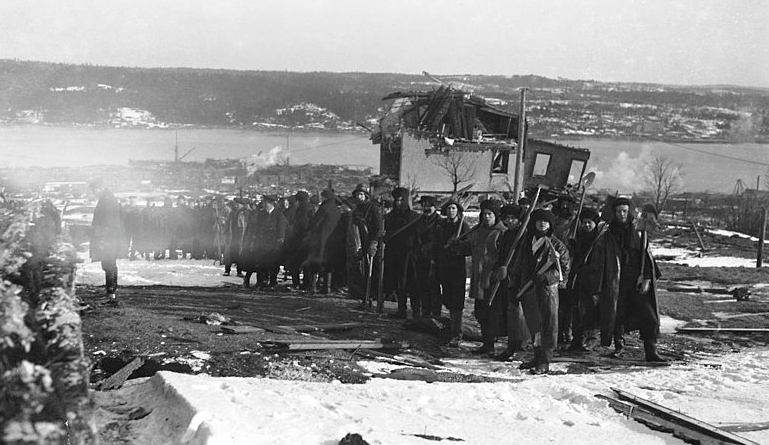 William James, Wikimedia Commons
William James, Wikimedia Commons
Boston Sends Help In Record Time
Within hours of hearing the news, Boston sent doctors, nurses, and emergency supplies. This act of kindness created a lasting bond between the two cities.
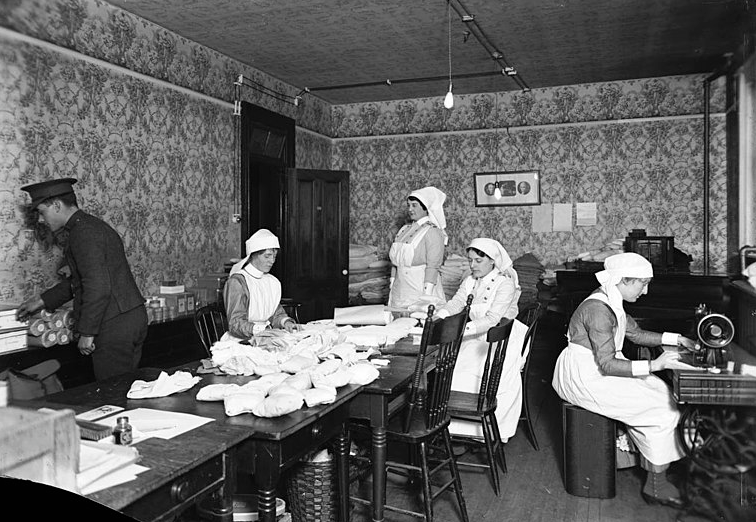 William James, Wikimedia Commons
William James, Wikimedia Commons
A Blizzard Complicates Relief Efforts
A day after the explosion, a blizzard dumped 16 inches of snow on Halifax. Many trapped survivors froze and passed, worsening the tragedy.
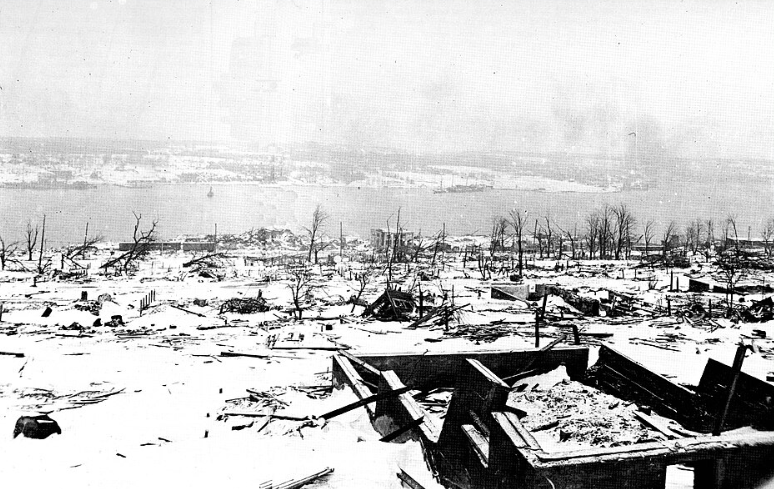 William James, Wikimedia Commons
William James, Wikimedia Commons
A City In Mourning
Mass funerals were held as families grieved thousands of lost loved ones. The entire city was left shattered, struggling to comprehend the magnitude of the disaster.
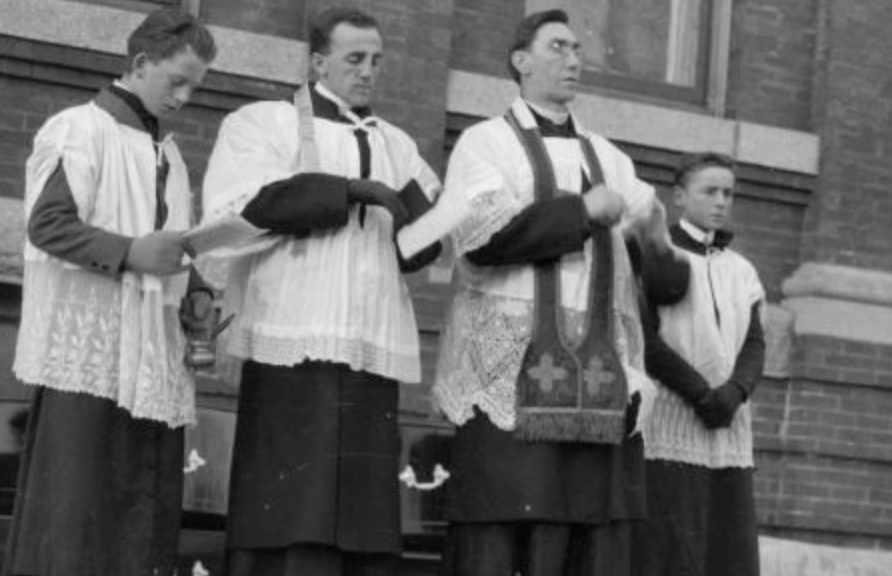 Toronto History, CC BY 2.0, Wikimedia Commons
Toronto History, CC BY 2.0, Wikimedia Commons
A Flawed Investigation Places Blame
The official inquiry initially blamed the Mont-Blanc’s crew for the disaster. Later appeals determined both ships were responsible, but no one was ever convicted.
 W.G. MacLaughlan, Wikimedia Commons
W.G. MacLaughlan, Wikimedia Commons
Africville Receives Little Assistance
The Black community of Africville, already marginalized, received little aid after the explosion. The government’s failure to support them exposed deep ethnic injustices.
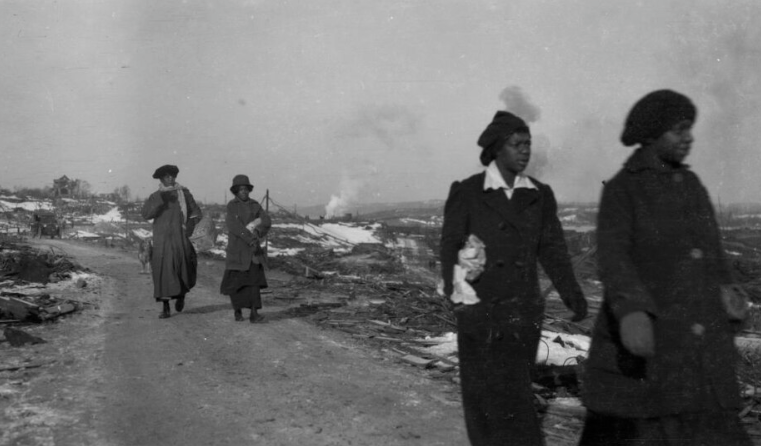 Toronto History, CC BY 2.0, Wikimedia Commons
Toronto History, CC BY 2.0, Wikimedia Commons
The Forgotten Tragedy Of The Mi’kmaq
The Turtle Grove Mi’kmaq settlement was entirely wiped out, yet few records acknowledge their suffering. Survivors were forcibly displaced and given minimal assistance.
 Toronto History, CC BY 2.0, Wikimedia Commons
Toronto History, CC BY 2.0, Wikimedia Commons
A Disaster That Changed Maritime Laws
In response to the explosion, stricter regulations were put in place for ships carrying dangerous cargo. These changes helped prevent future maritime disasters.
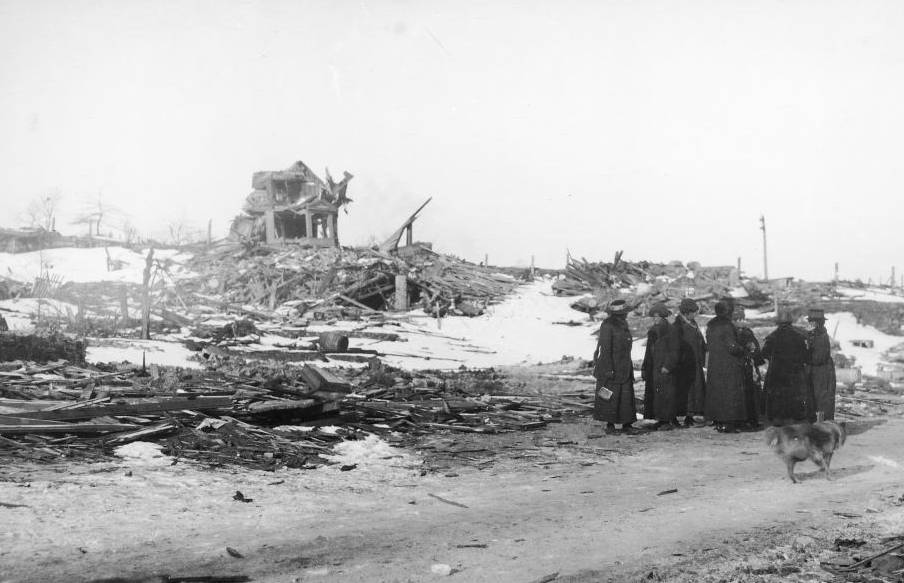 Toronto History, CC BY 2.0, Wikimedia Commons
Toronto History, CC BY 2.0, Wikimedia Commons
The Halifax Relief Commission Leads Recovery
The Halifax Relief Commission was formed to oversee reconstruction efforts. It provided aid, housing, and financial support to thousands of survivors.
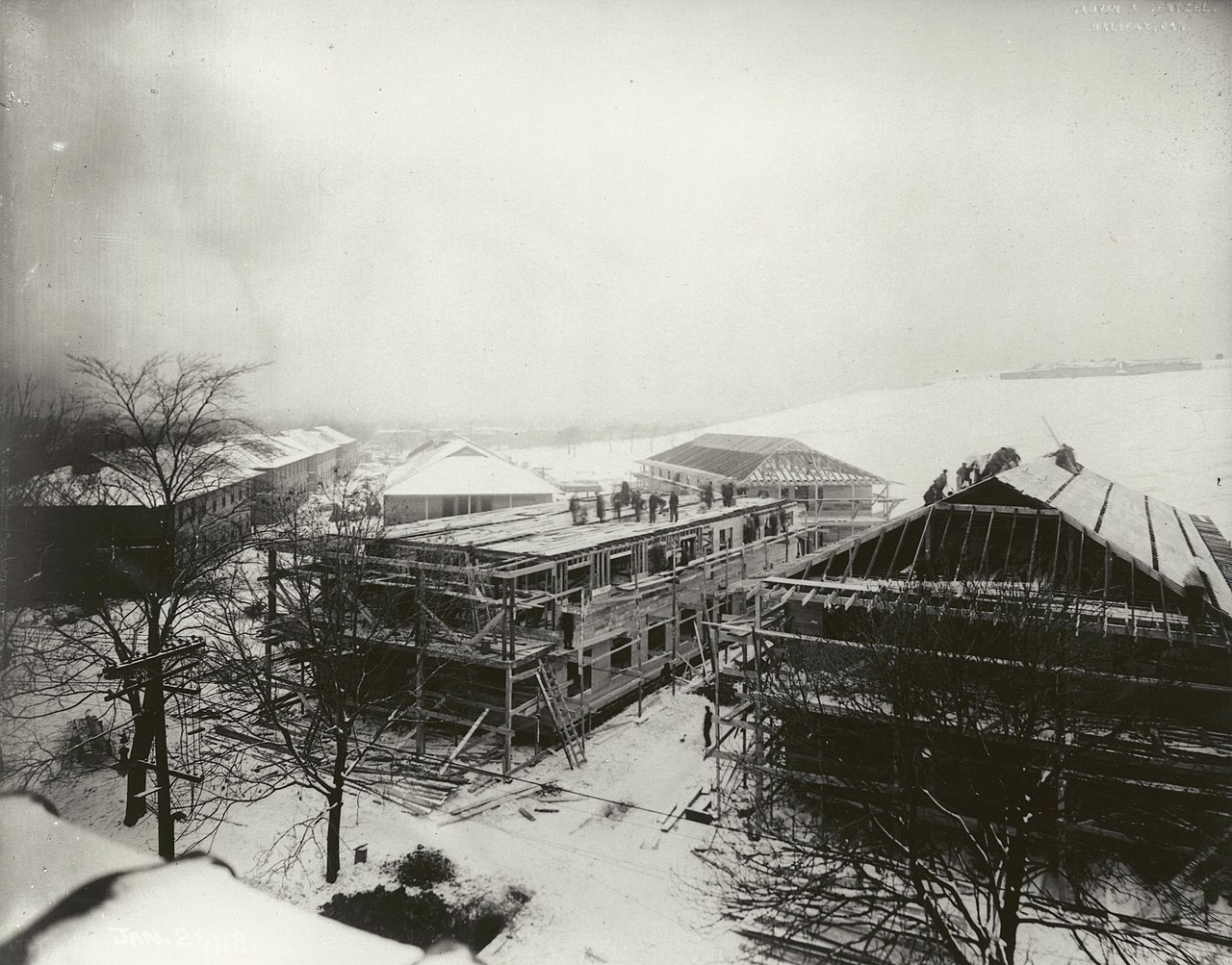 Nova Scotia Archives, Wikimedia Commons
Nova Scotia Archives, Wikimedia Commons
Rebuilding Halifax From The Ashes
Entire neighborhoods were redesigned and rebuilt, including the fire-resistant Hydrostone district. The explosion reshaped Halifax’s cityscape forever.
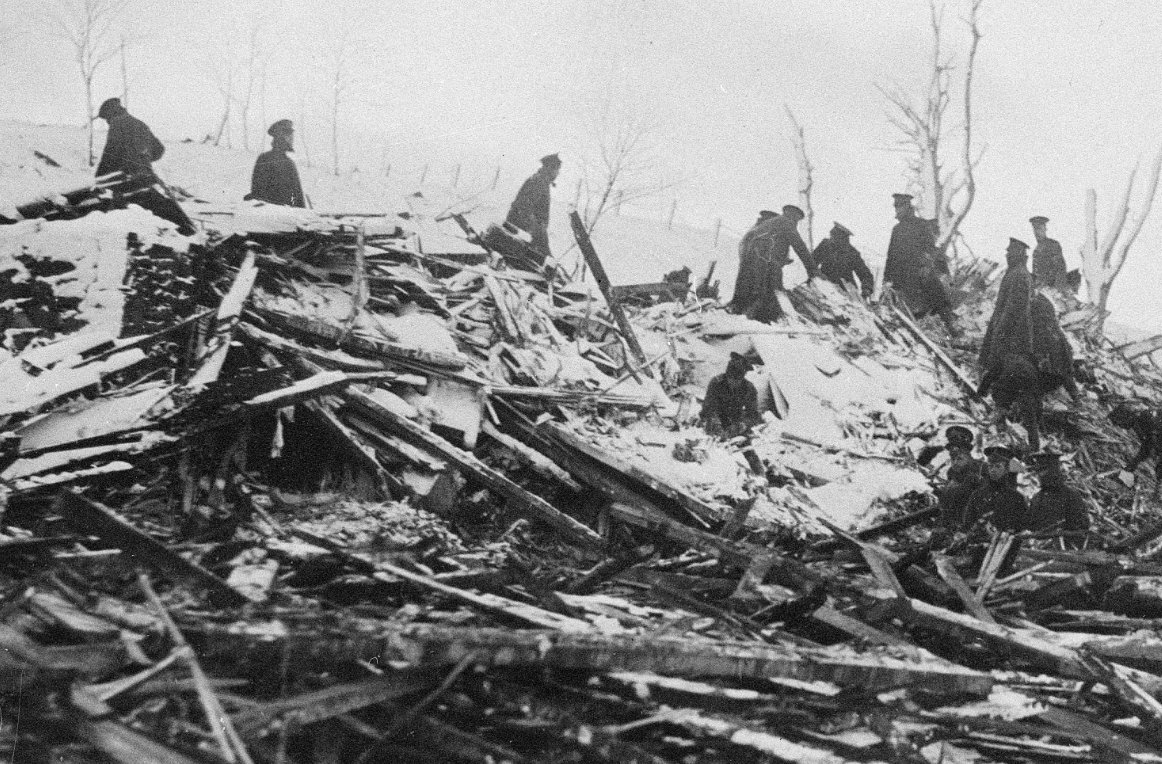 BiblioArchives / LibraryArchives, CC BY 2.0, Wikimedia Commons
BiblioArchives / LibraryArchives, CC BY 2.0, Wikimedia Commons
Medical Advancements Born From Tragedy
New treatments for burn victims and eye injuries were developed due to the explosion. Many modern trauma-care techniques have their origins in Halifax’s medical response.
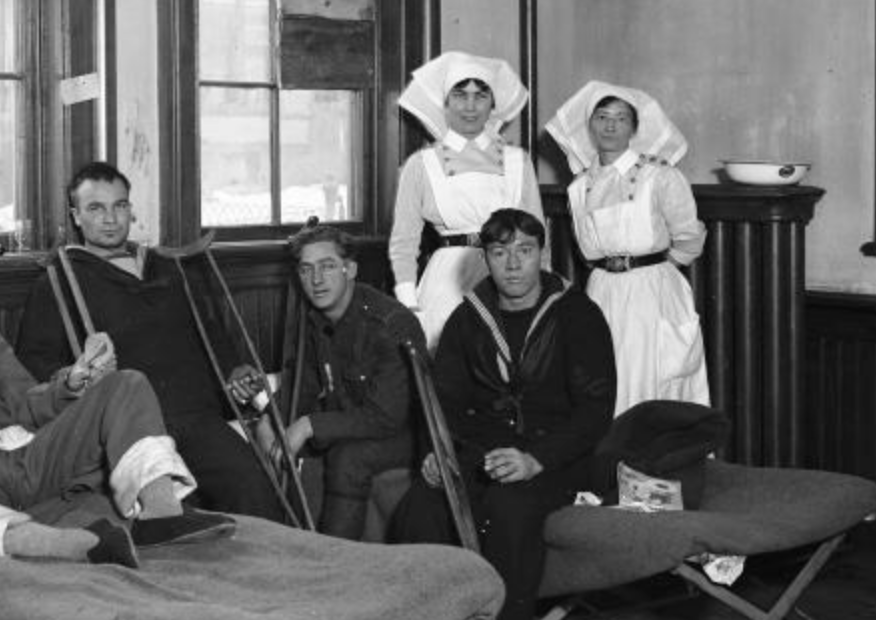 William James, Wikimedia Commons
William James, Wikimedia Commons
Halifax And Boston’s Christmas Tradition
To honor Boston’s help, Halifax sends an annual Christmas tree to the city. This symbol of gratitude continues over a century later.
 Briancua, CC BY-SA 4.0, Wikimedia Commons
Briancua, CC BY-SA 4.0, Wikimedia Commons
Preserving The Memory Of The Explosion
For decades, the tragedy was largely forgotten, overshadowed by battle and time. In recent years, memorials and books have revived public awareness.
 Toronto History, CC BY 2.0, Wikimedia Commons
Toronto History, CC BY 2.0, Wikimedia Commons
A Disaster That Must Never Be Forgotten
The Halifax Explosion remains one of Canada’s most tragic disasters. Its legacy of resilience, sacrifice, and recovery is a testament to human perseverance.
 Toronto History , CC BY 2.0, Wikimedia Commons
Toronto History , CC BY 2.0, Wikimedia Commons
Lessons Learned From Tragedy
The sheer scale of devastation led to significant changes in safety regulations, particularly concerning the transport of hazardous materials. The lessons learned from Halifax shaped future emergency response strategies and highlighted the importance of preparedness.
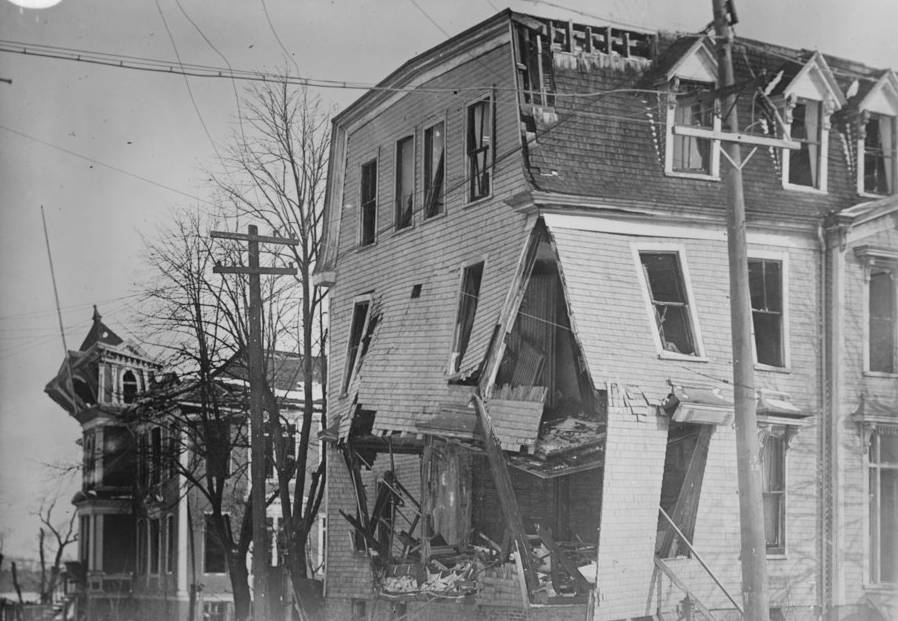 Bain News Service, Wikimedia Commons
Bain News Service, Wikimedia Commons
Honoring Those Who Responded
The bravery of first responders, medical personnel, and everyday citizens in the aftermath of the explosion remains an enduring part of Halifax’s history. Firefighters, nurses, and volunteers risked their lives to save others, providing aid despite overwhelming destruction.
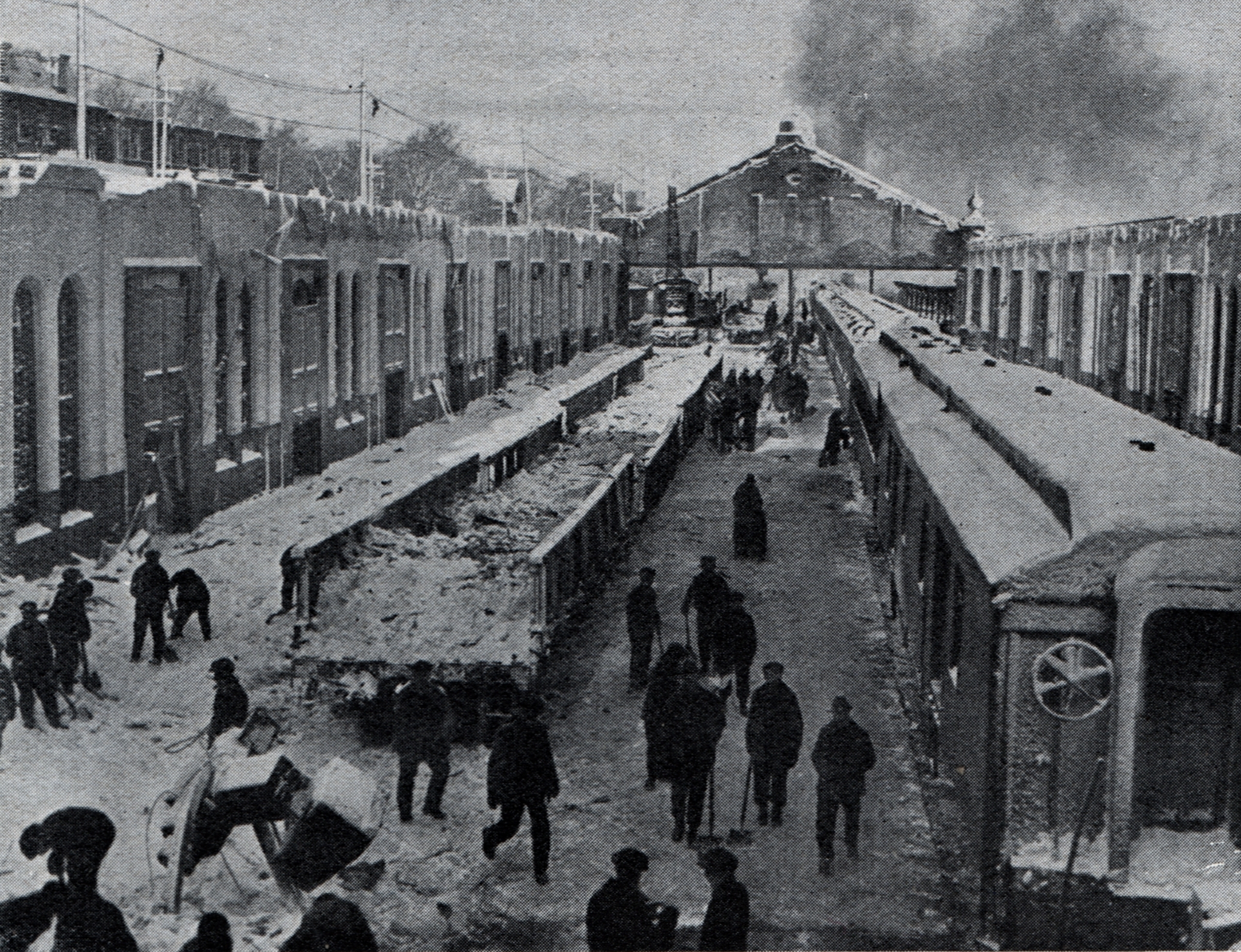 Unknown Author, Wikimedia Commons
Unknown Author, Wikimedia Commons
A Legacy That Endures
More than a century later, the Halifax Explosion continues to be studied and remembered as a pivotal moment in Canadian history. Through annual ceremonies, historical exhibits, and the continued exchange of a Christmas tree with Boston, its impact is honored by future generations.
You May Also Like:
The 40 Biggest Sea Disasters In History
Natural Disasters That Changed Our World
History's Most Tragic Shipwreck Wasn't The Titanic
 Briancua, CC BY-SA 4.0, Wikimedia Commons
Briancua, CC BY-SA 4.0, Wikimedia Commons
Sources: 1


